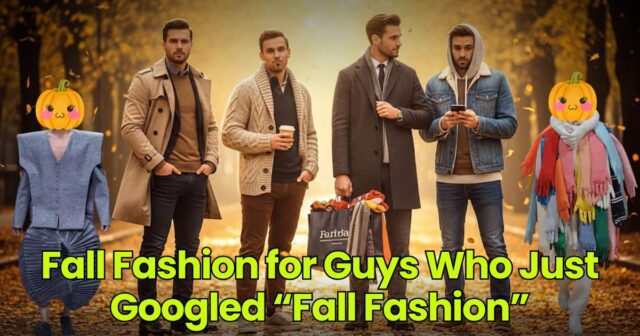Pepsi reveals new logo—inside the rebrand featuring electric blue and black
The soda brand's first rebranding since 2008 conveys “boldness and confidence,” executives say.

Pepsi this morning revealed a new logo and visual identity that executives say better reflects the brand’s boldness and energy, connection to pop culture and digital ambitions. The new design, which was created in-house, is the soda's first logo change in 15 years and will be used in packaging and marketing beginning this fall. It will eventually be rolled out worldwide.
The change puts the Pepsi wordmark back into the Pepsi globe, in a way that resembles the Pepsi logo that was used for much of the 1980s. What’s new is a custom all-caps font, along with new colors—electric blue to convey vibrancy, and black, which signifies Pepsi Zero Sugar, the new growth driver for the brand, according to PepsiCo.
A variety of blue and black “pulses” and “ripple effects” radiating out from the logo evoke the brand’s long association with music while helping it stand out on store shelves and online, executives said.
The new design includes a can silhouette that is meant to be easily integrated into advertising—for instance by overlaying it over pictures of food that pairs with the cola.

The can silhouette can connote collaborations with food, Pepsi officials said.
Credit: Pepsi
The logo change is Pepsi’s 12th since its founding in 1898 and its first since 2008, when Pepsi introduced the “smile” globe and the lower-case wordmark. That change, despite being met with some mixed reviews, will have lasted longer than any other look in the company’s history, said Todd Kaplan, chief marketing officer of Pepsi.
Also read: More about the last Pepsi logo update
Kaplan said he and Mauro Porcini, PepsiCo’s chief design officer, began looking at renewing Pepsi’s brand identity about three-and-a-half years ago. Kaplan confessed that the current Pepsi logo lacked the “boldness and confidence” to match the evolution of the Pepsi brand, and had grown “a bit muted for today’s standards.”
More beverage stories from Ad Age
PepsiCo's carbonated beverages could use a shot of new energy. Its portfolio of carbonated soft drinks lost volume and dollar share to rival Coca-Cola last year, according to Beverage Digest figures covering most retail outlets. Among cola brands, Coke held a 16.2% dollar share to Pepsi's 8.2%. The biggest gains in market share belonged to Coke Zero Sugar, which gained 0.4% and holds a 4% dollar share. Pepsi Zero Sugar gained 0.1% to hold a 0.8% share. Pepsi Zero Sugar has been recently reformulated and Pepsi is advertising heavily to encourage consumer trial.

Some of Pepsi's logo changes over the years.
Credit: Pepsi
Porcini said the company led the design work but also consulted with various outside agencies to validate ideas. The company’s research indicated Pepsi fans young and old had a strong affinity for the wordmark inside the logo, leaving designers the challenge of doing so while also modernizing the look. The “Pepsi pulse” effect is one way of doing that, Porcini said. These dots, lines or spaces appearing on packaging and online are meant to change over time, keeping the design contemporary and relevant in different parts of the world, said Porcini. The black, which encircles the globe, indicates Zero Sugar “becoming the protagonist of all our communication,” according to Porcini. That is because the Zero Sugar variety has long used the color black in its design.
Also read: How a TikTok creator's fake Pepsi ad went viral
Changing the visual branding of a business the size of Pepsi is no small undertaking, and Kaplan declined to specify the cost. “If you think of the amount of touch points this brand has, from fountains and cups to vending machines, to trucks to cans to signs to stadiums, this is a massive undertaking,” he said. “And it’s something that will take time to roll out in the marketplace effectively because of that.”

Pepsi's current design (left) had grown “a bit muted for today’s standards,” CMO Todd Kaplan said.
Credit: Pepsi
In addition to boldness and confidence, Kaplan said the new look needed to convey Pepsi’s brand of “unapologetic enjoyment,” while acknowledging the brand’s heritage. Finally, Kaplan said the identity needed to be “built for the digital era,” or be adaptable to formats ranging from streaming TV to Web3. That includes using more animation and movement, “unlocking more flexibility for Pepsi to move between physical and digital spaces,” the brand stated.
Read more: Streaming TV advertising FAQ for brands
“As we started really sharply defining the brand, and really standing for this idea of unapologetic enjoyment and showing up bolder, more of a challenger brand… we’ve done a great job, but it’s also felt visually… inconsistent, and we’ve had to bring in external things to complement the visual system we have today, rather than having a visual system exude and bring those things to life,” Kaplan said.

A rendering of a fleet truck with the new Pepsi logo.
Credit: Pepsi
Asked about how he anticipated the new logo would impact sales, Kaplan said, “The current logo is one of the most valuable logos in the world, so changing it is not something we’re doing lightly. So we are going to make sure everything we do is validated with consumers, and that we understand the impact on sales, and we understand the impact it will have on people emotionally.
“The great news is this visual design is so broadly appealing,” he continued. “When you think of an older consumer who sees the slight nod backwards to some of the previous designs, [and] when you think of a younger consumer who can understand the energy and the pulse, the electric blue and the sharpness of the black, just how on-point that is for today. And it’s really just a relatable brand overall. And so, we were really excited to see how this will impact both our consumers lives, our business, and beyond.”
Sign up for Ad Age newsletters
From influencer marketing to agencies, get the latest news and analysis delivered to your inbox

 Tekef
Tekef 































